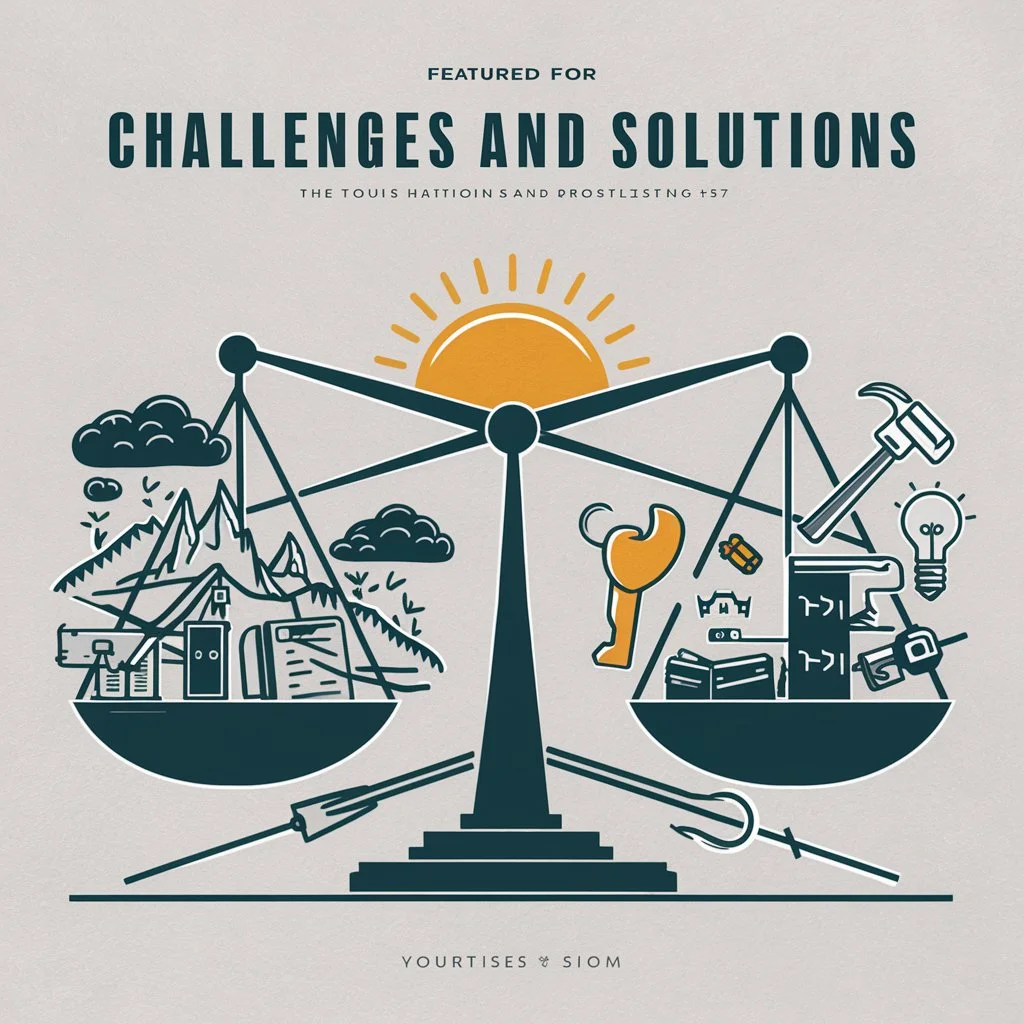In the fast-paced world of software development, a harmonious coding team is the cornerstone of success. The concept of a “Harmonicode Team” goes beyond mere collaboration, encompassing a synergy that drives innovation, productivity, and job satisfaction. As we delve into the intricacies of building and maintaining such a team, we’ll explore the key elements that transform a group of developers into a cohesive unit capable of tackling complex challenges.
The importance of team harmony in software development cannot be overstated. A well-functioning team can significantly boost productivity, reduce errors, and foster a positive work environment that attracts and retains top talent. Moreover, harmonious coding teams are better equipped to adapt to the ever-changing landscape of technology, embracing new methodologies and tools with enthusiasm and efficiency.
In this comprehensive guide, we’ll examine:
- Effective coding practices that promote collaboration
- Communication strategies for tech teams
- Leadership techniques in software development
- Methods to enhance developer team productivity
By implementing the strategies outlined in this article, you’ll be well on your way to creating a Harmonicode Team that not only meets but exceeds expectations. Whether you’re a team leader looking to improve your group’s dynamics or a developer seeking to contribute to a more harmonious work environment, this guide will provide valuable insights and actionable advice.
Building the Foundation

Creating a harmonious coding team starts with laying a solid foundation. This foundation is built on three key pillars: shared vision and goals, team values and culture, and a psychologically safe environment.
Shared Vision and Goals
A unified vision acts as a guiding star for your team. It gives everyone a clear direction and purpose. To establish this:
- Hold a team meeting to discuss long-term objectives
- Encourage input from all team members
- Write down the agreed-upon vision and goals
- Make these visible in your workspace or digital platforms
Shared goals help break down the vision into actionable steps. They should be SMART: Specific, Measurable, Achievable, Relevant, and Time-bound. Review and update these goals regularly to keep the team aligned and motivated.
Team Values and Culture
Your team’s values shape its culture. They influence how team members interact and make decisions. To define your team’s values:
- Brainstorm important traits as a group
- Vote on the top 5-7 values
- Describe what each value looks like in practice
- Create a values document and share it with the team
Some common values in harmonious coding teams include:
- Openness to feedback
- Continuous learning
- Respect for diverse viewpoints
- Commitment to quality code
- Willingness to help others
Encourage your team to live these values daily. Recognize and celebrate when team members exemplify these values in their work.
Creating a Psychologically Safe Environment
Psychological safety is crucial for team harmony. It allows team members to take risks, share ideas, and admit mistakes without fear of judgment. To foster this:
- Lead by example: admit your own mistakes and uncertainties
- Encourage questions and ideas from all team members
- Respond positively to suggestions, even if they’re not implemented
- Address any behaviors that undermine safety promptly
In team discussions, use phrases like “What are your thoughts on this?” or “I’d like to hear your perspective.” This shows you value everyone’s input.
Remember, building a strong foundation takes time and effort. It’s an ongoing process that requires commitment from every team member. Regular check-ins and adjustments will help ensure your foundation remains solid as your team grows and evolves.
By focusing on these foundational elements, you’re setting the stage for a truly harmonious coding team. With a shared vision, strong values, and psychological safety in place, your team will be well-equipped to tackle challenges, innovate, and thrive in the dynamic world of software development.
Effective Communication Strategies
Clear communication is the lifeblood of any harmonious coding team. It ensures everyone is on the same page and working towards common goals. Let’s explore key strategies to boost your team’s communication.
Regular Team Meetings and Stand-ups
Daily stand-ups keep the team aligned. Here’s how to make them effective:
- Keep them short (15 minutes max)
- Focus on three questions:
- What did you do yesterday?
- What will you do today?
- Any blockers?
- Use a timer to stay on track
For longer meetings, set clear agendas. Send them out beforehand so everyone can prepare. End each meeting with action items and owners.
Choosing the Right Communication Tools
Pick tools that fit your team’s needs. Common options include:
- Slack or Microsoft Teams for quick chats
- Zoom or Google Meet for video calls
- Trello or Jira for task tracking
- GitHub or GitLab for code management
Whatever you choose, ensure everyone knows how to use them. Offer training if needed.
Active Listening and Constructive Feedback
Active listening shows respect and builds trust. To practice it:
- Give full attention to the speaker
- Ask clarifying questions
- Summarize what you heard to confirm understanding
When giving feedback, be specific and constructive. Use the “sandwich” method:
- Start with something positive
- Offer the constructive criticism
- End with encouragement or another positive point
Remember, the goal is to help, not to criticize.
Overcoming Communication Barriers in Remote/Hybrid Teams
Remote work can make communication harder. Here are some tips to overcome this:
- Use video calls when possible to catch non-verbal cues
- Set up virtual “water cooler” chats to build relationships
- Be mindful of time zones when scheduling meetings
- Overcommunicate rather than under-communicate
- Use asynchronous communication tools for non-urgent matters
Documentation and Knowledge Sharing
Good documentation saves time and reduces confusion. Encourage your team to:
- Write clear comments in their code
- Keep README files up-to-date
- Use a wiki or shared drive for project documentation
Set up a system for sharing knowledge. This could be:
- Regular tech talks by team members
- A shared bookmarks list of useful resources
- A mentoring program for new team members
By implementing these communication strategies, you’ll create a more connected and efficient team. Remember, good communication doesn’t happen by accident. It takes effort and practice from everyone. But the rewards – fewer misunderstandings, faster problem-solving, and a more harmonious team – are well worth it.
Keep reviewing and adjusting your communication practices as your team grows and changes. What works today might need tweaking tomorrow. Stay open to feedback and always look for ways to improve.
Collaborative Coding Practices

Collaborative coding is at the heart of a harmonious development team. It boosts code quality, spreads knowledge, and builds team spirit. Let’s explore key practices that foster collaboration.
Pair Programming and Its Benefits
Pair programming involves two developers working on the same code together. One types (the driver) while the other reviews and thinks ahead (the navigator). They switch roles often.
Benefits of pair programming include:
- Fewer bugs
- Better code design
- Knowledge sharing
- Improved team communication
To make pair programming work:
- Rotate pairs regularly
- Set clear goals for each session
- Take breaks to avoid burnout
- Encourage open communication
Some teams do “mob programming” where the whole team works on one problem together. This can be great for tackling tricky issues or onboarding new team members.
Code Reviews: Best Practices and Etiquette
Code reviews help catch bugs and share knowledge. They’re a chance to learn, not to criticize. Here are some tips:
- Review code in small chunks, not large batches
- Use a checklist to ensure consistency
- Give specific, actionable feedback
- Praise good code and clever solutions
- Ask questions instead of making demands
Remember, the goal is better code, not perfect code. Be kind and constructive in your comments.
Version Control and Branching Strategies
Good version control practices keep your codebase clean and make collaboration easier. Use a system like Git and follow these tips:
- Commit often with clear, descriptive messages
- Use feature branches for new work
- Keep main/master branch always deployable
- Use pull requests for code reviews
A common branching strategy is GitFlow:
- Master branch for production code
- Develop branch for ongoing work
- Feature branches for new features
- Release branches for preparing releases
- Hotfix branches for urgent fixes
Pick a strategy that works for your team and stick to it.
Documentation and Knowledge Sharing
Good documentation is key for collaboration. It helps new team members get up to speed and serves as a reference for everyone. Here’s what to document:
- Code: Add clear comments and keep them updated
- APIs: Document all endpoints, parameters, and responses
- Processes: Write down how to set up the dev environment, deploy code, etc.
- Architecture: Create diagrams showing how different parts of the system interact
Encourage knowledge sharing beyond documentation:
- Hold regular “lunch and learn” sessions
- Set up a team blog or wiki
- Create video tutorials for complex processes
- Pair junior developers with seniors for mentoring
Remember, the goal of collaborative coding is to create a team that’s greater than the sum of its parts. By working together, reviewing each other’s work, and sharing knowledge, you’ll build a stronger, more harmonious coding team.
These practices take time to implement and perfect. Be patient and keep encouraging your team to collaborate. Over time, you’ll see improvements in code quality, team morale, and overall productivity. Keep what works and be willing to adjust what doesn’t. Every team is unique, so find the collaborative practices that work best for yours.
Fostering a Learning Culture
A strong learning culture is key to a harmonious coding team. It keeps skills sharp and morale high. Let’s explore how to build this culture.
Encouraging Continuous Learning
In tech, standing still means falling behind. Encourage your team to always learn:
- Set aside time each week for learning
- Create a budget for books, courses, and tools
- Recognize and reward new skills
- Share interesting articles or videos in team chats
Make learning a normal part of work, not an extra task. This keeps your team excited and up-to-date.
Implementing Mentorship Programs
Mentorship helps both new and experienced developers grow. Here’s how to set up a program:
- Pair junior devs with seniors
- Set clear goals and expectations
- Schedule regular check-ins
- Rotate mentors to spread knowledge
Mentorship isn’t just for new hires. Even senior devs can learn from each other. Encourage peer mentoring too.
Organizing Internal Workshops
Internal workshops are a great way to share knowledge. They can cover:
- New technologies
- Best practices
- Lessons learned from projects
- Soft skills like communication or time management
To run effective workshops:
- Keep them short (1-2 hours max)
- Make them interactive
- Provide hands-on exercises
- Follow up with resources for further learning
Rotate who leads workshops. This gives everyone a chance to teach and learn.
Attending Conferences and External Training
External events offer fresh perspectives and networking chances. They can spark new ideas and motivation. Consider:
- Sending team members to relevant conferences
- Bringing in outside experts for training
- Joining local tech meetups
- Participating in online webinars
After these events, have attendees share what they learned with the team. This spreads the knowledge further.
Creating a Learning Resource Library
Build a shared library of learning resources:
- Books (physical and e-books)
- Online course subscriptions
- Useful websites and blogs
- Recorded conference talks
Make this library easy to access. Use tools like shared drives or bookmarking apps. Keep it organized and up-to-date.
Implementing ‘Innovation Time’
Give your team time to explore new ideas. Some companies use “20% time” where devs can work on their own projects one day a week. This can lead to:
- New product features
- Improved processes
- Personal growth
- Increased job satisfaction
Not all ideas will succeed, and that’s okay. The goal is to foster creativity and learning.
Celebrating Learning Achievements
Recognize when team members learn new skills or share knowledge. This could be:
- Shout-outs in team meetings
- A “Learner of the Month” award
- Adding new skills to performance reviews
- Opportunities to use new skills in projects
Celebration reinforces the value of learning and encourages more of it.
Remember, building a learning culture takes time. It needs support from leadership and buy-in from the whole team. But the benefits are worth it. A team that learns together grows together. They solve problems faster, adapt to changes better, and enjoy their work more.
Keep checking in with your team about learning. What’s working? What’s not? Adjust your approach as needed. With time and effort, you’ll create a truly harmonious coding team that thrives on continuous learning and growth.
Conflict Resolution in Coding Teams

Even in harmonious teams, conflicts can arise. The key is how you handle them. Good conflict resolution keeps the team strong and productive.
Identifying Common Sources of Conflict
In coding teams, conflicts often come from:
- Different coding styles
- Disagreements on technical solutions
- Misunderstandings about project requirements
- Uneven workloads
- Personality clashes
Knowing these sources helps you spot conflicts early. Early action prevents small issues from growing big.
Techniques for Constructive Disagreement
Disagreements can lead to better solutions if handled well. Try these techniques:
- Focus on the problem, not the person
- Use “I” statements to express your views
- Listen actively to understand others’ perspectives
- Look for common ground
Encourage your team to view disagreements as chances to find the best solution, not win an argument.
Mediation Strategies for Team Leads
As a team lead, you may need to step in to resolve conflicts. Here’s how:
- Stay neutral and listen to all sides
- Identify the root cause of the conflict
- Guide the team to find a solution together
- Follow up to ensure the issue is resolved
Remember, your goal is to help the team find a solution, not to impose one.
Turning Conflicts into Opportunities for Growth
Conflicts, when resolved well, can make the team stronger. They can:
- Improve communication
- Lead to better processes
- Increase understanding between team members
- Spark innovation
After resolving a conflict, discuss what everyone learned. Use these lessons to improve team practices.
Creating a Conflict Resolution Framework
Having a clear process helps handle conflicts smoothly. Here’s a simple framework:
- Acknowledge the conflict
- Gather information from all involved
- Identify the root cause
- Brainstorm solutions
- Agree on a solution
- Implement and follow up
Share this framework with your team. Knowing the process makes conflicts less scary.
Promoting Empathy and Understanding
Empathy can prevent many conflicts. Encourage your team to:
- Try to see things from others’ points of view
- Ask questions to understand, not to argue
- Recognize that everyone has different experiences and skills
Role-playing exercises can help build empathy. Have team members switch roles to see different perspectives.
Dealing with Recurring Conflicts
Some conflicts keep coming back. For these:
- Look for patterns. What triggers the conflict?
- Address underlying issues, not just symptoms
- Consider changing processes or team structure if needed
- Seek outside help if conflicts persist
Don’t ignore recurring conflicts. They can damage team harmony if left unchecked.
Training in Conflict Resolution
Consider providing conflict resolution training. This can cover:
- Active listening skills
- Assertive communication
- Negotiation techniques
- Emotional intelligence
These skills help in work and life. They’re valuable for everyone, not just leaders.
Remember, the goal isn’t to eliminate all conflict. Some conflict is normal and can be healthy. The aim is to handle conflicts in a way that makes the team stronger. With good conflict resolution skills, your team can turn disagreements into chances for growth and innovation.
Keep checking in with your team about how conflicts are handled. Are people comfortable raising issues? Do they feel heard? Adjust your approach as needed. With practice, your team will get better at resolving conflicts, leading to a more harmonious and productive coding environment.
Balancing Individual and Team Productivity
A harmonious coding team needs both individual focus and effective collaboration. Finding this balance is key to overall productivity.
Time Management Techniques for Developers
Good time management helps developers get more done. Here are some useful techniques:
- Pomodoro Technique: Work for 25 minutes, then take a 5-minute break
- Time blocking: Schedule specific tasks for certain times of the day
- To-do lists: Break big tasks into smaller, manageable chunks
- Priority matrix: Sort tasks by importance and urgency
Encourage your team to try different methods and find what works best for them.
Managing Interruptions and Focus Time
Interruptions can break a developer’s flow. To minimize this:
- Set up “quiet hours” for focused work
- Use status indicators in chat apps to show availability
- Batch non-urgent questions for scheduled check-ins
- Create a system for urgent issues that need immediate attention
Teach the team to respect each other’s focus time. This boosts individual productivity.
Balancing Solo Work with Collaboration
Coding often needs both alone time and teamwork. To balance these:
- Schedule solo coding time and collaborative sessions
- Use pair programming for complex tasks, not routine work
- Hold quick stand-ups to align the team, then let people work independently
- Use async communication tools for updates that don’t need immediate responses
Flexibility is key. Some days may need more collaboration, others more solo work.
Tools and Practices for Tracking Team Productivity
Tracking productivity helps identify what’s working and what’s not. Consider using:
- Project management tools like Jira or Trello
- Time tracking apps like Toggl or RescueTime
- Code metrics tools to measure output and quality
- Regular retrospectives to discuss team performance
Be careful not to over-measure. The goal is improvement, not micromanagement.
Creating Effective Work Environments
The right environment boosts productivity. For in-office teams:
- Provide quiet spaces for focused work
- Set up collaboration areas for group tasks
- Ensure good lighting and comfortable seating
For remote teams:
- Offer stipends for home office setups
- Use virtual co-working sessions to create a sense of togetherness
- Encourage regular breaks and “virtual water cooler” chats
Recognizing Different Work Styles
Not everyone works the same way. Some are early birds, others night owls. Some prefer long focus sessions, others shorter bursts. Acknowledge these differences:
- Allow flexible work hours when possible
- Let people customize their workspaces
- Provide options for both collaborative and solo work
Respecting diverse work styles leads to happier, more productive developers.
Avoiding Burnout
Productivity isn’t about working non-stop. To prevent burnout:
- Encourage regular breaks and time off
- Promote work-life balance
- Watch for signs of stress or overwork
- Rotate high-pressure tasks among team members
A rested team is a productive team.
Aligning Individual Goals with Team Objectives
Help team members see how their work fits into the bigger picture:
- Clearly communicate project goals and timelines
- Show how individual tasks contribute to team success
- Celebrate both personal and team achievements
This alignment boosts motivation and productivity.
Remember, productivity isn’t one-size-fits-all. What works for one team or person might not work for another. Keep trying different approaches. Ask for feedback regularly. Be willing to adjust your methods.
The goal is to create an environment where both individuals and the team can thrive. When you find the right balance, you’ll see improved code quality, faster project completion, and a more harmonious team overall. Keep fine-tuning your approach, and you’ll build a coding team that’s both highly productive and genuinely enjoyable to work in.
Diversity and Inclusion in Coding Teams

Diverse teams bring different viewpoints and ideas. This leads to better problem-solving and innovation. Let’s explore how to build and support diverse, inclusive coding teams.
Benefits of Diverse Teams in Software Development
Diverse teams offer many advantages:
- More creative solutions
- Better understanding of diverse user needs
- Improved decision-making
- Increased innovation
- Broader skill sets
Studies show diverse teams often outperform homogeneous ones. They bring varied experiences and perspectives to the table.
Creating an Inclusive Team Culture
An inclusive culture makes everyone feel welcome and valued. Here’s how to foster it:
- Lead by example. Show respect for all team members.
- Encourage open communication. Make it safe to share ideas.
- Celebrate different cultures and backgrounds.
- Use inclusive language in all communications.
- Provide equal opportunities for growth and leadership.
Remember, inclusion is an ongoing process. Keep working at it every day.
Addressing Unconscious Bias
We all have unconscious biases. The key is recognizing and addressing them:
- Provide unconscious bias training for all team members
- Use blind resume screening in hiring
- Create diverse interview panels
- Set clear, objective criteria for evaluations and promotions
Be open to feedback about bias. It’s often unintentional but still harmful.
Supporting Underrepresented Groups in Tech
Underrepresented groups often face unique challenges. Support them by:
- Creating mentorship programs
- Sponsoring attendance at diversity-focused tech conferences
- Forming employee resource groups
- Partnering with organizations that promote diversity in tech
Make sure support goes beyond recruitment. Focus on retention and advancement too.
Inclusive Hiring Practices
Build a diverse team from the ground up:
- Write inclusive job descriptions
- Advertise in diverse channels
- Use structured interviews to reduce bias
- Set diversity goals for your hiring pipeline
Remember, hiring is just the start. You need to create an environment where diverse talent wants to stay.
Fostering Psychological Safety
Psychological safety means feeling safe to take risks and be vulnerable. To create it:
- Encourage questions and ideas from everyone
- Treat mistakes as learning opportunities
- Give credit for ideas to their original source
- Address exclusionary behavior promptly
When people feel safe, they’re more likely to contribute their unique perspectives.
Measuring and Improving Diversity and Inclusion
What gets measured gets managed. Consider tracking:
- Diversity statistics at different levels of the organization
- Employee satisfaction scores across different groups
- Promotion rates for underrepresented groups
- Retention rates across different demographics
Use this data to set goals and track progress. Be transparent about the results.
Inclusive Team Building and Social Events
Team events should be welcoming to all. Consider:
- Varied activities that don’t always center on alcohol
- Accommodations for different dietary needs
- Flexible timing to accommodate different schedules
- Virtual options for remote team members
Ask for input to ensure events are inclusive and enjoyable for everyone.
Remember, building a diverse and inclusive team takes time and ongoing effort. It’s not about ticking boxes, but about creating a truly welcoming environment where everyone can thrive. The rewards are worth it: a more innovative, productive, and harmonious coding team.
Keep learning and adjusting your approach. What works today might need updating tomorrow. Stay open to feedback and new ideas. With persistence, you can build a coding team that not only reflects the diversity of the world but also harnesses that diversity to create amazing software.
Agile Methodologies for Harmonious Teams
Agile methods can help create more harmonious coding teams. They focus on flexibility, collaboration, and continuous improvement. Let’s explore how to use Agile for better teamwork.
Overview of Agile Principles
Agile is built on four main ideas:
- Individuals and interactions over processes and tools
- Working software over comprehensive documentation
- Customer collaboration over contract negotiation
- Responding to change over following a plan
These principles promote teamwork and adaptability. They help teams stay flexible and focused on what matters most.
Scrum, Kanban, and Other Agile Frameworks
Scrum is a popular Agile framework. It uses sprints, usually 2-4 weeks long. Teams plan, work, and review in these short cycles. This helps catch problems early.
Kanban focuses on visualizing work and limiting work in progress. It uses boards to show task status. This helps teams spot bottlenecks and balance workloads.
Other frameworks include:
- Extreme Programming (XP): Emphasizes technical practices like pair programming
- Lean: Focuses on eliminating waste and maximizing value
- Crystal: Adjusts processes based on team size and project criticality
Choose the framework that best fits your team’s needs. You can even mix elements from different approaches.
Adapting Agile Practices for Team Harmony
Agile can boost team harmony when used well. Here’s how:
- Daily stand-ups: Keep these short and focused. They improve communication.
- Sprint planning: Involve the whole team. This creates shared ownership.
- Retrospectives: Use these to continuously improve team processes.
- Pair programming: Rotate pairs to spread knowledge and build relationships.
- Information radiators: Use visible charts or boards to keep everyone informed.
Remember, Agile is about people first. Use these practices to support your team, not control them.
Overcoming Common Agile Implementation Challenges
Agile isn’t always easy. Common challenges include:
- Resistance to change: Address fears and explain benefits clearly.
- Lack of stakeholder buy-in: Educate stakeholders about Agile values.
- Misunderstanding Agile principles: Provide training and mentoring.
- Poor estimation: Improve with practice and historical data.
- Scope creep: Use a well-maintained product backlog.
Be patient. It takes time to get Agile right. Keep communicating and adjusting as you go.
Agile Roles and Team Dynamics
Agile defines specific roles:
- Product Owner: Represents the customer, manages the product backlog
- Scrum Master: Facilitates the process, removes obstacles
- Development Team: Self-organizing group that does the work
These roles help create clear responsibilities. But remember, everyone should collaborate across roles too.
Agile Metrics for Team Health
Measure your team’s Agile health with:
- Velocity: How much work the team completes per sprint
- Sprint burndown: How work decreases over a sprint
- Cycle time: How long it takes to complete a task
- Team happiness: Regular surveys on team satisfaction
Use these metrics to spot trends, not to judge individuals. They’re tools for improvement, not punishment.
Continuous Improvement in Agile Teams
Agile is all about getting better over time. Use these practices:
- Regular retrospectives to discuss what’s working and what’s not
- Kaizen events for focused improvement efforts
- Encourage experimentation with new techniques
- Celebrate small wins and learnings from failures
Create a culture where everyone feels empowered to suggest improvements.
Remember, Agile is a mindset, not just a set of practices. It’s about creating a team that can adapt quickly, work together smoothly, and deliver value consistently. When used well, Agile methods can significantly boost team harmony and productivity.
Keep refining your Agile approach. What works for one team might not work for another. Stay flexible and open to change. With time and practice, you’ll develop an Agile process that helps your coding team become truly harmonious and high-performing.
Leadership in Harmonious Coding Teams

Good leadership is crucial for a harmonious coding team. It sets the tone, guides the vision, and helps the team overcome challenges. Let’s explore key aspects of effective tech leadership.
Qualities of Effective Tech Leaders
Great tech leaders share certain traits:
- Technical competence
- Clear communication skills
- Empathy and emotional intelligence
- Vision and strategic thinking
- Adaptability and openness to change
- Ability to inspire and motivate
These qualities help leaders guide their teams effectively. They earn respect and trust from team members.
Balancing Technical Expertise with People Skills
Tech leaders need both technical know-how and people skills. To balance these:
- Stay involved in coding, but don’t dominate technical decisions
- Delegate technical tasks to grow team members’ skills
- Focus on removing obstacles for your team
- Spend time on one-on-one meetings to understand team needs
- Keep learning both technical and leadership skills
Remember, your role is to enable your team’s success, not to be the technical hero.
Empowering Team Members
Empowered teams are more motivated and productive. To empower your team:
- Give them autonomy in how they approach tasks
- Provide opportunities for skill development
- Encourage them to make decisions and learn from mistakes
- Recognize and celebrate their achievements
- Support their ideas and initiatives
Trust your team. They’ll often surprise you with their capabilities when given the chance.
Leading by Example in Coding Practices
As a leader, your actions set the standard. Model good practices:
- Write clean, well-documented code
- Participate in code reviews constructively
- Admit when you don’t know something
- Show enthusiasm for learning new technologies
- Maintain a good work-life balance
Your team will follow your lead. Make sure you’re leading them in the right direction.
Fostering a Culture of Innovation
Innovation keeps your team competitive and engaged. To foster it:
- Allocate time for experimentation (like Google’s 20% time)
- Encourage sharing of new ideas in team meetings
- Create a safe space for trying new approaches
- Recognize innovative efforts, not just successes
- Provide resources for learning and exploration
Remember, not all innovations will succeed. The goal is to create an environment where people feel safe to try new things.
Handling Conflicts and Challenges
Leaders often need to navigate difficult situations. When conflicts arise:
- Listen to all sides without judgment
- Focus on the issue, not personalities
- Guide the team towards finding a solution together
- Follow up to ensure the resolution sticks
- Use conflicts as opportunities for team growth
Stay calm and objective. Your reaction sets the tone for how the team handles challenges.
Developing Future Leaders
Great leaders create more leaders. To develop leadership in your team:
- Delegate leadership tasks and responsibilities
- Provide mentoring and coaching
- Offer leadership training opportunities
- Give feedback on leadership skills
- Create paths for career advancement
Nurturing future leaders ensures your team’s long-term success and harmony.
Continuous Self-Improvement
Leadership is a journey of constant learning. To keep improving:
- Seek feedback from your team regularly
- Stay updated on industry trends and leadership practices
- Reflect on your decisions and their outcomes
- Find a mentor or peer group for support
- Be open to changing your approach when needed
The best leaders never stop growing and learning.
Remember, leadership in a coding team is about creating an environment where everyone can do their best work. It’s about serving your team, not controlling them. By focusing on empowerment, communication, and continuous improvement, you can build a truly harmonious and high-performing coding team.
Stay humble, keep learning, and always put your team first. With time and effort, you’ll develop into a leader who not only delivers great results but also inspires and nurtures a new generation of tech talent.
Measuring and Improving Team Harmony
Measuring team harmony helps you understand what’s working and what needs improvement. Let’s explore how to assess and enhance your team’s harmony.
Key Performance Indicators for Team Harmony
Here are some useful metrics to track:
- Team satisfaction scores
- Employee turnover rate
- Collaboration frequency
- Conflict resolution time
- Code quality metrics
- Project completion rates
- Innovation metrics (new ideas implemented)
These indicators give you a holistic view of team harmony. They cover both emotional and performance aspects.
Regular Retrospectives and Feedback Loops
Retrospectives are crucial for continuous improvement. Here’s how to make them effective:
- Hold them regularly (e.g., end of each sprint)
- Create a safe space for honest feedback
- Focus on both what went well and what could improve
- Encourage everyone to participate
- End with actionable items
Use a variety of formats to keep retrospectives engaging. Try techniques like Start-Stop-Continue or sailboat retrospectives.
Tools for Assessing Team Satisfaction and Engagement
Several tools can help measure team harmony:
- Anonymous surveys (e.g., SurveyMonkey, Google Forms)
- Pulse check apps (e.g., 15Five, TINYpulse)
- One-on-one meeting software (e.g., Lattice, Fellow)
- Team health check tools (e.g., Spotify’s Squad Health Check)
Choose tools that fit your team’s culture and needs. Make sure they’re easy to use and provide actionable insights.
Strategies for Continuous Improvement
Improving team harmony is an ongoing process. Try these strategies:
- Set team harmony goals and track progress
- Implement changes based on retrospective feedback
- Provide training on soft skills like communication and conflict resolution
- Rotate roles and responsibilities to build empathy
- Celebrate small wins and improvements
Remember, change takes time. Be patient and persistent in your improvement efforts.
Balancing Quantitative and Qualitative Feedback
Numbers tell part of the story, but not all of it. To get a full picture:
- Combine survey data with open-ended questions
- Hold focus groups to dig deeper into issues
- Encourage informal feedback in addition to formal assessments
- Look for patterns in both numbers and comments
- Consider the context behind the data
This balanced approach helps you understand not just what’s happening, but why.
Creating a Culture of Open Communication
Open communication is key to team harmony. Foster it by:
- Leading by example – share your own thoughts and concerns
- Actively listening to team members
- Responding positively to feedback, even if it’s critical
- Creating multiple channels for communication (in-person, chat, email)
- Addressing issues promptly and transparently
When team members feel heard, they’re more likely to contribute to improving harmony.
Addressing Underlying Issues
Sometimes, harmony issues have deep roots. Look for underlying causes like:
- Unclear roles or expectations
- Inadequate resources or support
- Personal conflicts or misunderstandings
- Misalignment with company values or goals
Addressing these root causes often leads to more lasting improvements in team harmony.
Celebrating Progress and Success
Recognizing improvements boosts morale and encourages further progress. Ways to celebrate include:
- Sharing success stories in team meetings
- Giving out awards for contributions to team harmony
- Organizing team events to mark significant improvements
- Highlighting team harmony successes in company communications
Celebration reinforces positive behaviors and motivates the team to keep improving.
Remember, measuring and improving team harmony is not about achieving perfection. It’s about creating a culture of continuous improvement where team members feel valued, engaged, and motivated to do their best work.
Keep the process transparent, involve the whole team, and be willing to adapt your approach based on what you learn. With consistent effort and attention, you can build a coding team that’s not just productive, but truly harmonious and enjoyable to be part of.
Case Studies

Real-world examples can teach us a lot about building harmonious coding teams. Let’s look at some case studies of successful tech companies and team transformations.
Google: 20% Time and Psychological Safety
Google is known for its innovative culture. Two key practices stand out:
- 20% Time: Engineers can spend 20% of their time on side projects. This led to products like Gmail and AdSense.
- Psychological Safety: Google’s Project Aristotle found that psychological safety was the most important factor in effective teams.
Lessons learned:
- Give developers freedom to innovate
- Create an environment where it’s safe to take risks
Spotify: Squad Model
Spotify’s engineering culture is built around small, cross-functional teams called “squads.”
Key features:
- Squads are autonomous and self-organizing
- They’re supported by “chapters” and “guilds” for knowledge sharing
- Regular “health checks” ensure teams are functioning well
Results:
- Increased team autonomy and ownership
- Faster decision-making and product development
Lessons learned:
- Small, empowered teams can be highly effective
- Regular check-ins help maintain team health
Atlassian: ShipIt Days
Atlassian, maker of tools like Jira and Trello, uses “ShipIt Days” to boost innovation and team bonding.
How it works:
- 24-hour period where employees work on any project they want
- Projects are presented and voted on at the end
- Winners get bragging rights and small prizes
Benefits:
- Encourages creativity and cross-team collaboration
- Many ShipIt projects become actual product features
Lessons learned:
- Short, focused innovation sprints can yield great results
- Friendly competition can boost team spirit
Microsoft: Growth Mindset Transformation
Under CEO Satya Nadella, Microsoft shifted from a “know-it-all” to a “learn-it-all” culture.
Key changes:
- Emphasis on growth mindset and continuous learning
- Increased focus on empathy and inclusivity
- Shift from internal competition to collaboration
Results:
- Improved employee satisfaction
- Increased market value and innovation
Lessons learned:
- Culture change starts at the top
- A learning-focused culture can revitalize a company
Etsy: Blameless Post-Mortems
Etsy, the e-commerce platform, practices “blameless post-mortems” after incidents.
How it works:
- Focus on understanding what happened, not who’s at fault
- All team members are encouraged to share their perspective
- Emphasis on learning and preventing future issues
Benefits:
- Reduces fear of reporting problems
- Leads to more thorough understanding of issues
Lessons learned:
- A no-blame culture encourages openness and learning
- Treating failures as learning opportunities improves overall system reliability
Before-and-After: Small Team Transformation
A 10-person development team was struggling with missed deadlines and low morale.
Changes implemented:
- Introduced daily stand-ups and bi-weekly retrospectives
- Implemented pair programming for complex tasks
- Created a mentoring program pairing junior and senior devs
- Established clear coding standards and review processes
Results after 6 months:
- 30% increase in on-time project delivery
- Improved code quality (50% reduction in reported bugs)
- Higher team satisfaction scores
- Reduced turnover rate
Lessons learned:
- Small, consistent changes can lead to significant improvements
- Combining technical practices with team-building activities yields the best results
These case studies show that building a harmonious coding team is possible with the right practices and culture. While every team is unique, common themes emerge: fostering psychological safety, encouraging innovation, promoting learning, and focusing on collaboration over competition.
Remember, what works for one team might not work for another. Use these examples as inspiration, but always adapt ideas to fit your team’s specific needs and culture. The key is to keep experimenting, learning, and improving.
Challenges and Solutions

Even the best teams face obstacles. Let’s look at common challenges in coding teams and how to overcome them.
Challenge 1: Communication Breakdowns
In coding teams, miscommunication can lead to errors and delays.
Solutions:
- Use clear, concise language in all communications
- Implement regular stand-ups and check-ins
- Utilize visual aids like diagrams and flowcharts
- Encourage asking questions and seeking clarification
- Use collaboration tools like Slack or Microsoft Teams effectively
Remember, good communication is a skill that needs practice. Provide training if needed.
Challenge 2: Technical Debt
Accumulated technical debt can slow down development and frustrate team members.
Solutions:
- Allocate time in each sprint to address technical debt
- Use code reviews to catch potential debt early
- Implement coding standards to prevent new debt
- Educate stakeholders on the importance of addressing technical debt
- Celebrate improvements in code quality
Balance new feature development with maintaining and improving existing code.
Challenge 3: Resistance to Change
Some team members may resist new tools or processes.
Solutions:
- Clearly explain the reasons for changes
- Involve the team in decision-making processes
- Implement changes gradually when possible
- Provide adequate training and support
- Show early wins to build confidence in the changes
Be patient. Change takes time, but consistent effort pays off.
Challenge 4: Burnout and Work-Life Balance
Long hours and high pressure can lead to burnout.
Solutions:
- Encourage regular breaks and time off
- Set realistic deadlines and workloads
- Promote a healthy work-life balance
- Implement flexible working hours when possible
- Watch for signs of burnout and address them early
Remember, a well-rested team is more productive in the long run.
Challenge 5: Skill Gaps
In fast-moving tech fields, skill gaps can develop quickly.
Solutions:
- Create individual learning plans for team members
- Allocate time and budget for training and conferences
- Implement mentoring or pair programming
- Encourage knowledge sharing within the team
- Celebrate learning achievements
Foster a culture of continuous learning and growth.
Challenge 6: Siloed Knowledge
When knowledge is concentrated in a few individuals, it creates risk and bottlenecks.
Solutions:
- Rotate responsibilities and project assignments
- Use pair programming to spread knowledge
- Create and maintain good documentation
- Hold regular knowledge-sharing sessions
- Use tools like wikis to capture and share information
Aim for a team where everyone has a broad understanding of the system.
Challenge 7: Personality Conflicts
Different working styles can sometimes clash.
Solutions:
- Promote understanding of different personality types
- Encourage empathy and active listening
- Address conflicts early and directly
- Use team-building activities to improve relationships
- Consider reshuffling team composition if necessary
Remember, diversity in personalities can be a strength when managed well.
Challenge 8: Balancing Speed and Quality
The pressure to deliver quickly can sometimes compromise code quality.
Solutions:
- Set clear quality standards and stick to them
- Use automated testing to catch issues early
- Implement continuous integration/continuous deployment (CI/CD)
- Educate stakeholders on the importance of quality
- Celebrate both speed and quality achievements
Find the right balance for your team and project needs.
Challenge 9: Adapting to Remote Work
Remote work can pose unique challenges for team cohesion and communication.
Solutions:
- Use video calls to maintain face-to-face interaction
- Implement clear communication protocols
- Use tools designed for remote collaboration
- Schedule virtual team-building activities
- Be mindful of different time zones and work schedules
With the right approach, remote teams can be just as effective as co-located ones.
Remember, challenges are opportunities for growth. By addressing these issues head-on, you can build a stronger, more harmonious coding team. Keep communication open, be willing to experiment with solutions, and always focus on continuous improvement. With persistence and the right strategies, your team can overcome any obstacle.

I’m Dariel Campbell, the guy who loves making your experience awesome at “Go Hawaii US.” Playing with stories and attractions is my thing. At Go Hawaii US, we’re here to make your visit stand out and shine. Let’s make your time in Hawaii unforgettable—come and join the fun at Go Hawaii US!












